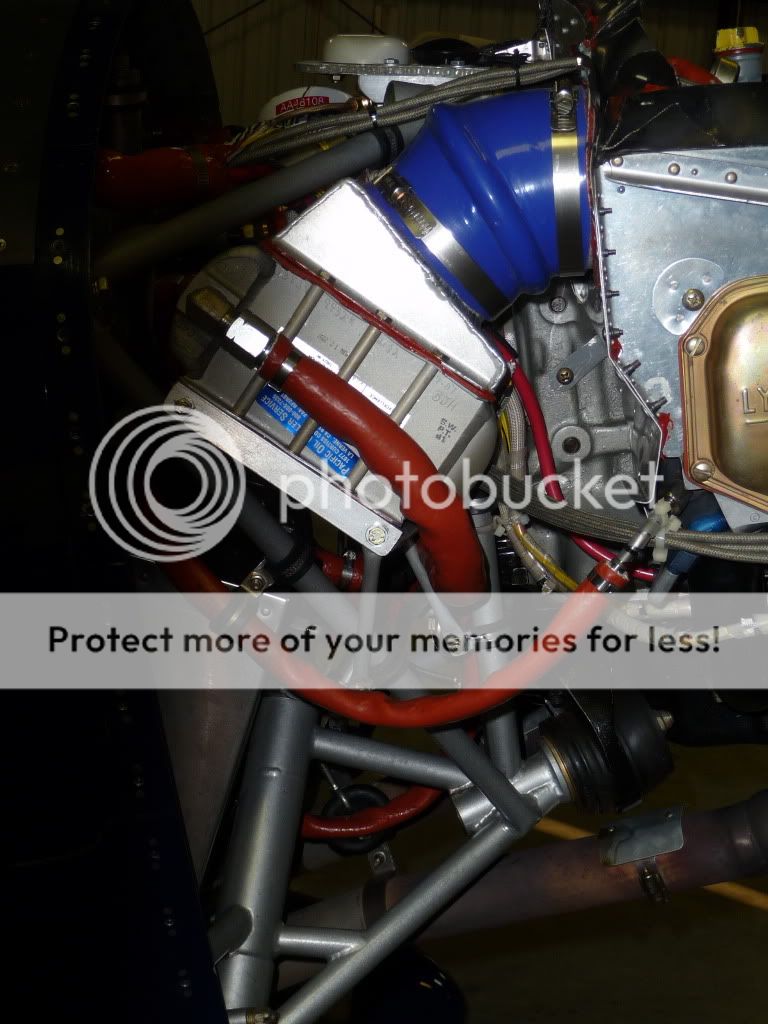Couple notes.
The intake is more or less throttled by the engine. The theoretical maximum air volume which can be put through the system is equal to
[ (RPM x displacement) / 2 ] = cubic inches per minute
Divide by 1728 for cubic feet per minute (CFM).
Volumetric efficiency is a measure of how well we actual fill the cylinders. You can define it as the ratio of actual CFM to calculated CFM from the above equation. Lacking a dyno with a mass airflow sensor, we don't have a handy way of measuring actual CFM. However, you can make a safe assumption; common engines do not achieve much better than 75 - 85% VE. That's probably quite true for the Lycoming, which has very mild cam timing. Chris doesn't account for VE, so the calculated inlet size intended to be an exact match for the air requirement is actually a wee bit oversize. Oversize is not a bad thing.
An inlet sized to strictly match the air requirement does not convert dynamic pressure to static. As Chris says, all it will do is cancel one conventional inlet loss; the engine isn't required to accelerate flow into the inlet because it is already moving.
To capture dynamic pressure you must slow the moving air. Same choice here as with a cooling intake; you can go for internal or external recovery. You can do internal recovery behind a rather small hole if you have the length for a reasonable diffuser angle. I'd suggest the hole size indicated by Chris' numbers. Even smaller might work.
If you don't have the length, external recovery (a big hole) may be your best bet. With a modified Vans cowl and no prop extension, I needed to transition from the entry to a big flat filter is just a few inches. No way to get the desired 7 degree diffuser angle, so I went external....and thus a 4" inlet hole.
The wide mouth Rocket intake allows practical angles in the approach to a flat filter, assuming the filter can lay down more or less horizontal. Sadly, that also requires some length. The packaging gets really tight on a 4-cyl with no prop extension.
The intake is more or less throttled by the engine. The theoretical maximum air volume which can be put through the system is equal to
[ (RPM x displacement) / 2 ] = cubic inches per minute
Divide by 1728 for cubic feet per minute (CFM).
Volumetric efficiency is a measure of how well we actual fill the cylinders. You can define it as the ratio of actual CFM to calculated CFM from the above equation. Lacking a dyno with a mass airflow sensor, we don't have a handy way of measuring actual CFM. However, you can make a safe assumption; common engines do not achieve much better than 75 - 85% VE. That's probably quite true for the Lycoming, which has very mild cam timing. Chris doesn't account for VE, so the calculated inlet size intended to be an exact match for the air requirement is actually a wee bit oversize. Oversize is not a bad thing.
An inlet sized to strictly match the air requirement does not convert dynamic pressure to static. As Chris says, all it will do is cancel one conventional inlet loss; the engine isn't required to accelerate flow into the inlet because it is already moving.
To capture dynamic pressure you must slow the moving air. Same choice here as with a cooling intake; you can go for internal or external recovery. You can do internal recovery behind a rather small hole if you have the length for a reasonable diffuser angle. I'd suggest the hole size indicated by Chris' numbers. Even smaller might work.
If you don't have the length, external recovery (a big hole) may be your best bet. With a modified Vans cowl and no prop extension, I needed to transition from the entry to a big flat filter is just a few inches. No way to get the desired 7 degree diffuser angle, so I went external....and thus a 4" inlet hole.
The wide mouth Rocket intake allows practical angles in the approach to a flat filter, assuming the filter can lay down more or less horizontal. Sadly, that also requires some length. The packaging gets really tight on a 4-cyl with no prop extension.










